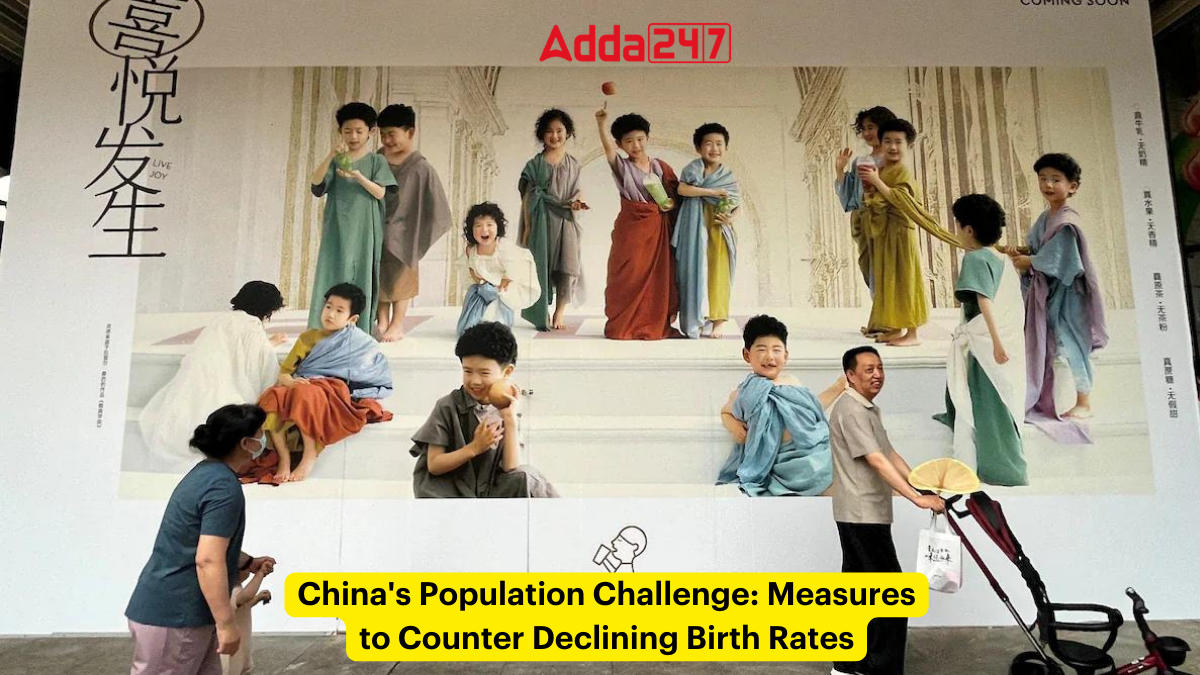China faces a demographic crisis as its population dropped for the second year in a row in 2023. This decline is attributed to a falling birth rate and an increase in deaths, especially after the lifting of COVID-19 restrictions. China’s total population stood at 1.4 billion, with the country falling behind India as the world’s most populous nation.
Factors Contributing to the Decline
- Increased Mortality: Deaths rose by 690,000 to 11.1 million, more than double the previous year’s increase, partly due to COVID-19 outbreaks
- Declining Birth Rates: The number of births fell for the seventh consecutive year, with only about 9 million babies born in 2023, half the total in 2016.
- Socio-Economic Challenges: High childcare and education costs, uncertainty in the job market, and gender discrimination are some factors discouraging couples from having more children.
Government Efforts to Boost Birth Rates
Policy Changes and Proposals
- Relaxation of Family Planning Policies: There have been suggestions to completely scrap birth limits, signaling a policy shift from the one-child rule to encouraging more births.
- Financial Incentives: Various regions in China have implemented cash incentives for families having more children, though these measures have seen limited success.
- Improving Childcare and Education: Making childcare affordable and accessible, especially for children under three years old, is a key focus.
- Enhancing Women’s Workplace Rights: Addressing discrimination against women in the job market and normalizing domestic roles for men are seen as essential steps.
Addressing the Demographic Shift
- Coping with an Aging Society: With a significant portion of the population over 60, China faces challenges in providing elderly care and managing a shrinking workforce.
- Pension System Strains: The ageing population poses a risk to the sustainability of the pension system, which is projected to run out of funds by 2035.
Cultural and Social Impacts
- Changing Attitudes: Reversing attitudes shaped by decades of the one-child policy is crucial. This involves public messaging and education about the benefits of larger families.
- Promotion of Parenthood: President Xi Jinping has emphasized the need to guide young people’s views on marriage, parenthood, and family, linking it to national development.
Important Questions Related to Exams
- What contributed to China’s population decline in 2023?
- How did COVID-19 restrictions impact China’s mortality rate?
- In 2023, how did China’s total population compare to India’s?
- What factors have led to a decline in China’s birth rates for seven consecutive years?
- What socio-economic challenges discourage couples in China from having more children?
- How much did deaths increase in China in 2023, and what was the main contributing factor?
- What policy changes have been proposed to boost birth rates in China?
- How have financial incentives been used in various regions of China to encourage more births?
- What key focus areas aim to improve birth rates in China, particularly regarding childcare and education?
- Why is addressing gender discrimination and enhancing women’s workplace rights considered essential for boosting birth rates in China?
Kindly share your responses in the comment section.



 Zelenskyy and Estonia’s New PM Discuss...
Zelenskyy and Estonia’s New PM Discuss...
 Ronald L. Rowe Jr. Named Acting Chief of...
Ronald L. Rowe Jr. Named Acting Chief of...
 Rahaab Allana Honored with French Arts a...
Rahaab Allana Honored with French Arts a...
